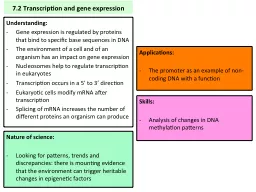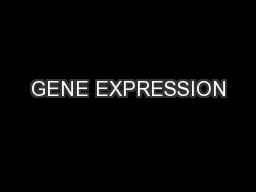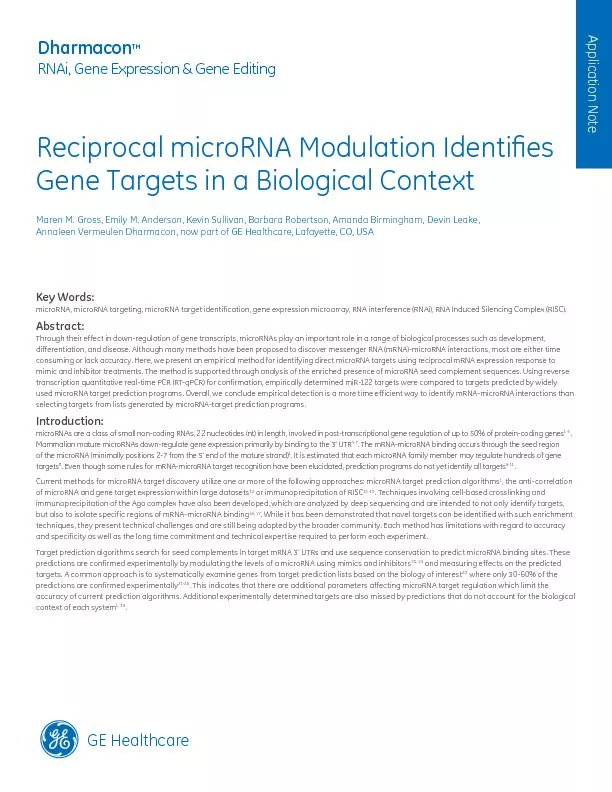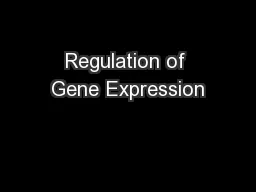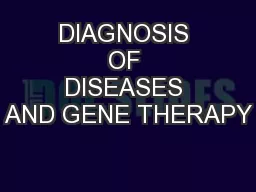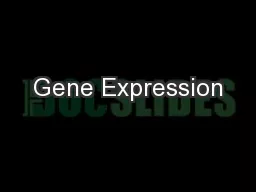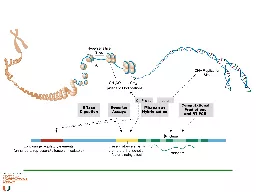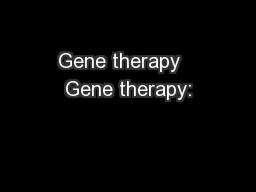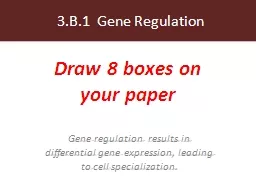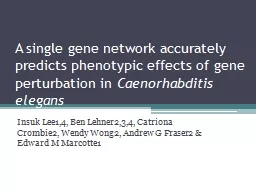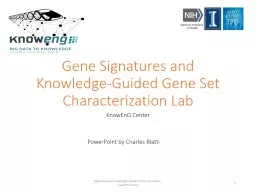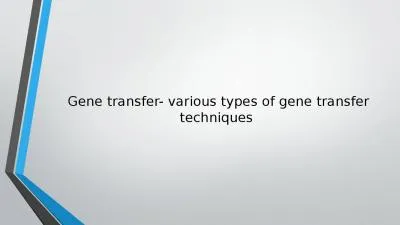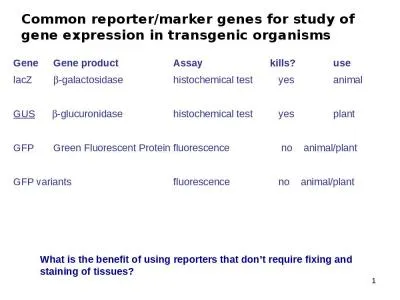PPT-Gene:
Author : kittie-lecroy | Published Date : 2017-04-27
Fine Structure of Gene An imaginary overview All information of our life is written in two Books Two set 23 Pairs of Chromosomes One of these Books of life
Presentation Embed Code
Download Presentation
Download Presentation The PPT/PDF document "Gene:" is the property of its rightful owner. Permission is granted to download and print the materials on this website for personal, non-commercial use only, and to display it on your personal computer provided you do not modify the materials and that you retain all copyright notices contained in the materials. By downloading content from our website, you accept the terms of this agreement.
Gene:: Transcript
Fine Structure of Gene An imaginary overview All information of our life is written in two Books Two set 23 Pairs of Chromosomes One of these Books of life is written by Father Set of chromosomes 23 inherited from Father. Inducible gene expression. kinetics of . β-galactosidase. enzyme induction. Add inducer. start transcription = mRNA accumulation. mRNA translation = protein accumulation. Remove inducer. Stop. transcription (. Understanding:. Gene expression is regulated by proteins that bind to specific base sequences in DNA . The environment of a cell and of an organism has an impact on gene expression. Nucleosomes help to regulate transcription in eukaryotes. CONSTITUTIVE GENE PRODUCTS ARE NEEDED BY THE BODY AT ALL TIMES. TUMOR SUPRESSOR PROTEINS. ATP. ENZYMES THAT CONTROL CELLULAR RESPIRATION. ADAPTIVE GENE PRODUCTS ARE ONLY REQUIRED UNDER CERTAIN CONDITIONS. RNAi, Gene Expression & Gene Editing Application Note GE Healthcare Figure 1. Effects of miRIDIAN miR-122 Mimic and Hairpin Inhibitor on endogenous levels of ALDOA as measured by branched DNA assay. D What does the operon model attempt to explain?. the coordinated control of gene expression . in bacteria. bacterial resistance to antibiotics. how genes move between homologous regions of DNA. the mechanism of viral attachment to a host cell. INTRODUCTION. Most developments in biotechnology originated for their potential applications in health care.. Contribution of biotechnology:. Diagnosis of diseases. Therapeutic agents. Correction of genetic disease-Gene therapy. Tonya C. Bates. Erin Dolan. Meredith S. Norris. John Rose. Tarren Shaw. Suann Yang. Ron Zimmerman. Facilitators: Kelly Hogan and Jennifer Warner. Gene Expression. Topic: Genetic Regulation. Context: Large lecture section of introductory biology students . Pre-transcriptional regulation. chromatin compaction . eg. . deacetylation. , . methylation. transcriptional initiation . ie. transcription factors to activate or repress. alternative promoters =. to correct a . genetic defect . by transferring of a . functional normal copy. of the gene into cells. Examples of diseases caused by genetic defect. Ornithine . transcarbamylase. (OTC deficiency). Draw 8 boxes on your paper. Gene regulation accounts for some of the phenotypic differences between organisms with similar genes.. 2005-2006. Gene regulation in bacteria. Control of gene expression enables individual bacteria to adjust their metabolism to environmental change. Caenorhabditis. . elegans. Insuk. Lee1,4, Ben Lehner2,3,4, . Catriona. Crombie2, Wendy Wong2, Andrew G Fraser2 & Edward M Marcotte1. Abstract. The fundamental aim of genetics is to understand how an organism's . KnowEnG Center. . Signatures and Knowledge-Guided Characterization | KnowEnG Center . 1. PowerPoint by Charles Blatti. Introduction. This goals of the lab are as follows:. Define a novel . gene expression signature . techniques . Content. Introduction. Importance of Gene transfer. Types of gene transfer techniques. Method. Application. Introduction. Gene transfer is to transfer a gene from one DNA molecule to another DNA molecule.. lacZ . b. -galactosidase histochemical test yes animal. GUS. . b. -glucuronidase histochemical test yes plant. GFP Green Fluorescent Protein fluorescence no animal/plant.
Download Document
Here is the link to download the presentation.
"Gene:"The content belongs to its owner. You may download and print it for personal use, without modification, and keep all copyright notices. By downloading, you agree to these terms.
Related Documents


